- Bernard Preston homepage
- Our green rainwater
- Rain Water Storage
Rain water storage
Rain water storage is one of the new-imperatives; the cost, reliability and quality all demand we harvest the manna from the heavens. Then we have to figure out how to stockpile it; in tanks, reservoirs and even converted swimming pools[3].
Rarely does a day go by when we don’t read in the press or hear on the news that a team is being sent to fix some serious water problem; that we live in a bone-dry country and we must all learn to use less.
News24: TOP STORY OF THE WEEK
"Jo'burg Water shock: Grid near collapse."
Instead if we could just learn to make a plan there is an ample supply falling from the sky for all our needs in most parts of the world. The underground rainwater reservoir is the matchmaker between the heavens, the home and the garden.
No rain water storage means going without long showers at the end of hectic days; no luxurious, relaxing baths either and precious few vegetables from the garden during the dry seasons.
Understand that we don't actually "use" the rainwater; it passes directly back to Mother Earth. But first it goes from the gutters to the reservoir; and hence through our bodies, homes and gardens.
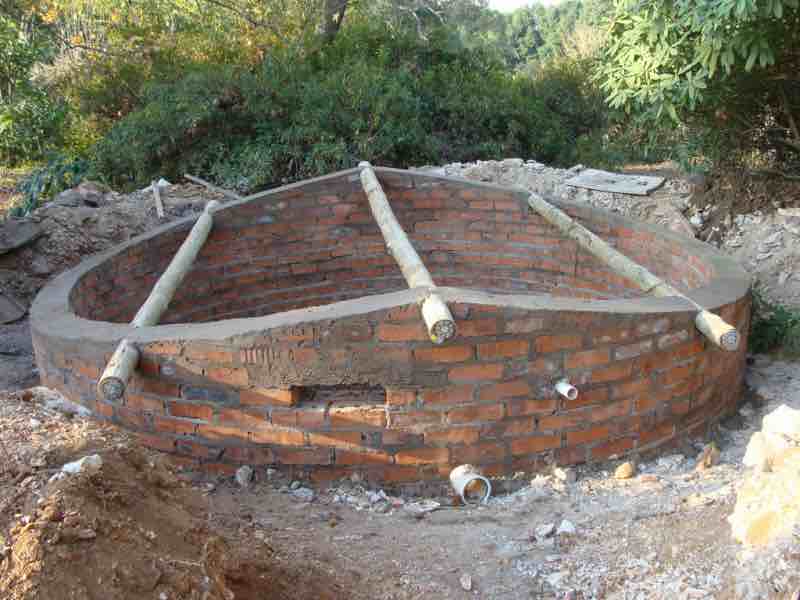 An underground reservoir is the cheapest option
An underground reservoir is the cheapest optionAdd to that the woes about ageing infrastructure, water leaks and raw-sewage running into our rivers; you’d think we have an unsolvable dilemma.
Our village has an average rainfall of about 1000mm. The chances are if you are reading this column that you have two hundred square metres of roof or more.
That means a very large volume of water lands on your roof every year; at least 200 kilolitres. That is more than enough for the needs of your home and garden. All you have to do is to find a way to collect and store it. It’s not rocket-science. Is it only farmers who can make a plan?
Have we not heard about lateral-thinking?
This week the Witness published a lengthy report about water security. There was mention of a seven billion rand annual loss due to poor governance, wastage and leakages; and inefficient use and storage. Add to that pollution from mines, farm runoff and burst sewerage-pipes; it does indeed seem like an insurmountable problem. It need not be so.
Ask any elderly person living in the country and he will tell you that all his needs when he was a child were supplied by rain collected in corrugated-iron tanks. They never filtered or chlorinated the water.
If he swallowed a fly it never killed him; nor would a few mosquito-larvae.
Today it’s a lot simpler with easy access to underground pipes, fibreglass-tanks and inexpensive filters; and a pump, of course. R10.000 would do it using the cheapest options.
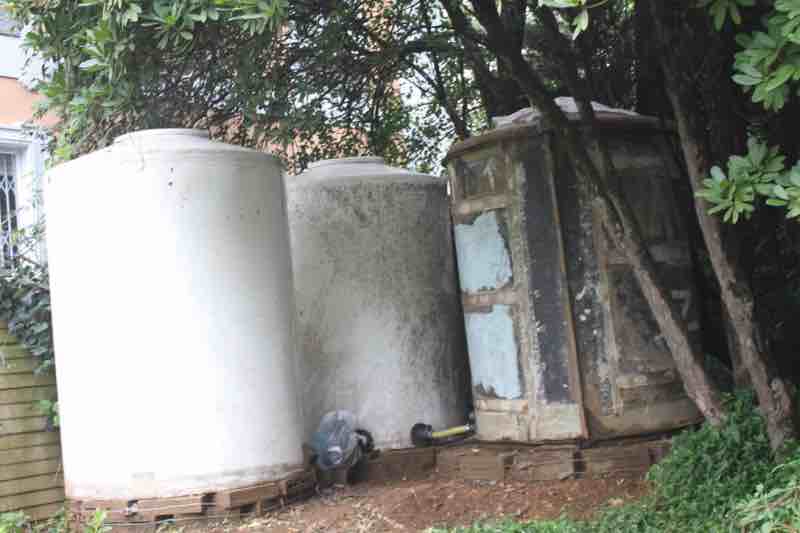 Fibreglass is the first choice in water tanks.
Fibreglass is the first choice in water tanks.There are three options in tanks. Those made of plastic, fibreglass or steel, increasing in price; and a reservoir, the cheapest of them. You really need a minimum of 9.000 litres of storage; we have 43 kL providing for all our needs including a twice-weekly deep irrigation of the veggie patch in the dry season. For two months in twelve years we have been forced to use municipal water.
I recommend fibreglass as it lasts indefinitely and can be repaired if damaged by physical trauma; the tanks are completely UV-resistant. One of ours is 40 years old and is still in perfect condition. An underground reservoir with a roof is even better as the water is much colder.
It is not really potable above ground without boiling; bugs will thrive in the warm conditions.
You could set up these tanks yourself if you are handy but there are plumbers who specialise in doing it for you.
You start with a network of sewerage pipes leading from your gutters to a low point on your property; the water will gravitate to your tanks or underground-reservoir. From there you pump it to your home and garden.
Imagine if the state donated 240 M rand, a figure that is much bandied about in recent times to domestic water-storage; for the indigent that would buy 40.000 tanks.
Another R40 million for a 1000-rand rebate for taxpayers would get a few tens of thousands of city folk well on their way.
A budget of seven billion rand, the amount lost every year would complete solve the problem. Of course the government won’t buy into this but you could.
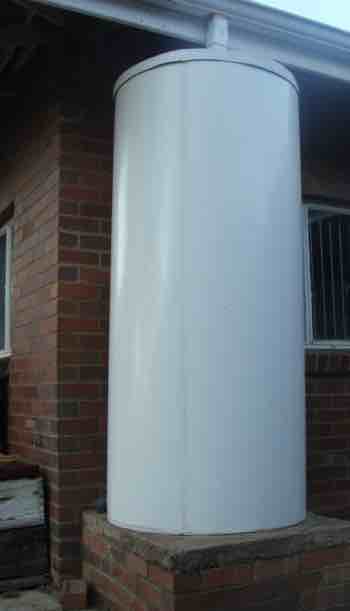
Broad beans
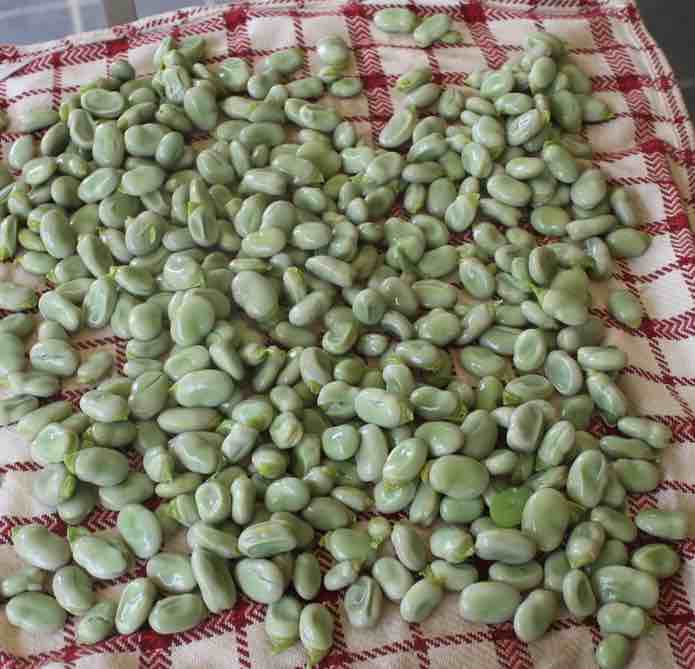
The broad bean is the queen of our garden; it's a rich source of vegetable protein and an important phytonutrient called L-dopa. But it grows in winter and more than any other vegetable needs an abundant supply of water; it has a very shallow rooting system.
The 50% rise in the price from the utility this year has killed gardening in the dry months for many; both for pleasure and those who desperately need homegrown food. Rain water storage is more important than ever.
Green beans have far less lectins than those that have been dried; the anti-nutrients that inhibit the absorption of minerals. They taste a lot nicer too.
So freezing broad beans is very important in our green kitchen. We have a whole year's supply of vegetable protein tucked away. There is absolutely no reason why anyone with a small piece of ground should be deficient in amino acids; add the occasional egg or glass of milk and all will be provided for.
Actually broad beans are the only legume with all the essential amino acids.
But it's all completely dependent on adequate rain water storage.
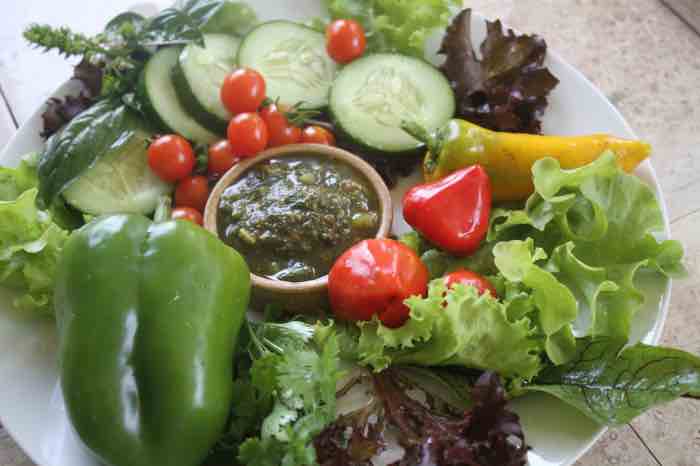 Food for those who want to live long in the land.
Food for those who want to live long in the land.Rain water storage
Rain water storage is for every home worldwide. Underground reservoirs are the best and cheapest option. The manna from the heavens is free.
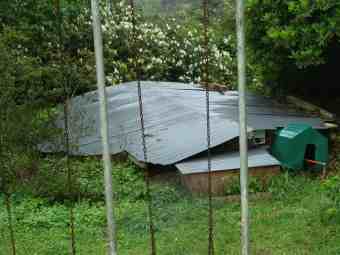 A custom-built underground reservoir
A custom-built underground reservoirWhen browsing use right click and Open Link in New Tab, or you may get a bad gateway signal.
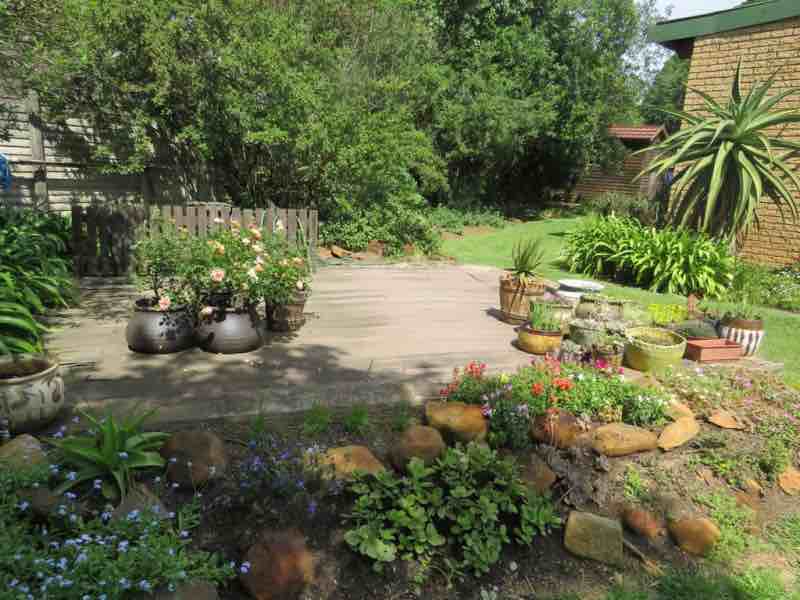 A swimming-pool converted into an underground reservoir
A swimming-pool converted into an underground reservoirNewsletter
Our newsletter is entitled "create a cyan zone" at your home, preserving both yourself and Mother Earth for future generations; and the family too, of course. We promise not to spam you with daily emails promoting various products. You may get an occasional nudge to buy one of my books.
Here are the back issues.
- Lifestyle and ideal body weight
- What are ultra-processed foods?
- Investing in long-term health
- Diseases from plastic exposure
- Intensive lifestyle management for obesity has limited value
- A world largely devoid of Parkinson's Disease
- The impact of friendly bacteria in the tum on the prevention of cancer
- There's a hole in the bucket
- Everyone is talking about weight loss drugs
- Pull the sweet tooth
- If you suffer from heartburn plant a susu
- Refined maize meal and stunting
- Should agriculture and industry get priority for water and electricity?
- Nature is calling
- Mill your own flour
- Bake your own sourdough bread
- Microplastics from our water
- Alternative types of water storage
- Wear your clothes out
- Comfort foods
- Create a bee-friendly environment
- Go to bed slightly hungry
- Keep bees
- Blue zone folk are religious
- Reduce plastic waste
- Family is important
- What can go in compost?
- Grow broad beans for longevity
- Harvest and store sunshine
- Blue zone exercise
- Harvest and store your rainwater
- Create a cyan zone at your home
Did you find this page interesting? How about forwarding it to a friendly book or food junkie? Better still, a social media tick would help.
- Bernard Preston homepage
- Our green rainwater
- Rain Water Storage
Address:
56 Groenekloof Rd,
Hilton, KZN
South Africa
Website:
https://www.bernard-preston.com